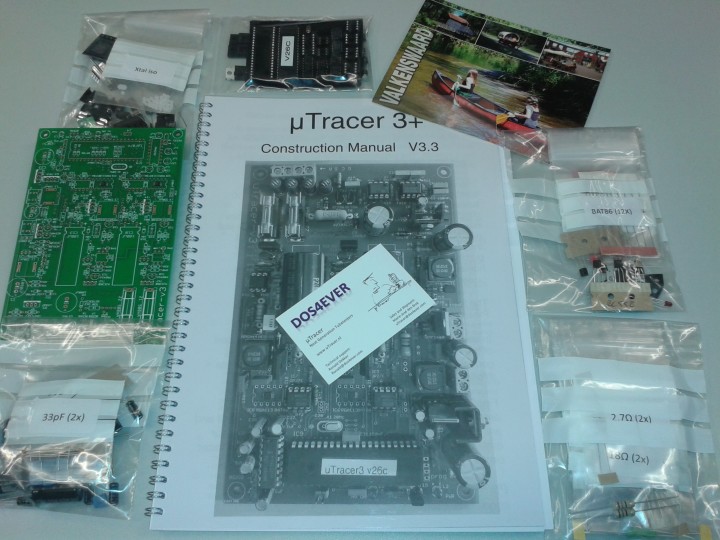The µTracer tube tester kit. Part 1: intro & unwrapping
What’s in the box
Over the years I have seen many companies including Elektor claiming to be electronic kit sellers but fail at instilling trust in the buyer anxious about his/her chances of success. Any confidence that evolves at the buyer side can be traced back to:
The µTracer 3+ kit is likely to be rated favorably on most if not all of the above aspects. In particular I value the Construction Manual for being exhaustive, step-by-step and well-illustrated, and... doubling as a kind of quick reference book for tube newbies (helped by Ronald’s contemplations on tube testing found on his website).
So, dry as it may look, this here photo of my kit unpacked pretty much says it all. Note the personal touch in the form of a postcard from Valkenswaard hand signed by the suppliers.

I instantly inspected the bag with the ICs, FETs, IC sockets and fuses in it, and was reassured to see that the 16-pin, 40-pin and 8-pin IC sockets were of the turned-pin variety. The two 6-pin sockets I saw are spring loaded types from AMP. All devices in this bag are on a piece of anti-static foam. It’s LOOKING GOOD and I can't wait to start soldering.
To be continued. Next time: assembly time!
Over the years I have seen many companies including Elektor claiming to be electronic kit sellers but fail at instilling trust in the buyer anxious about his/her chances of success. Any confidence that evolves at the buyer side can be traced back to:
- the assembly manual with the kit. That’s not an ‘article’ for general reading. Or a flyer in Chinesoid English;
- the kit packaging;
- the quality of the components supplied;
- assistance from the supplier when things don’t work as expected;
- anything that goes towards helping the buyer to understand the electronics;
- a real, knowledgeable person answering emails and phone calls;
- other users who built the kit successfully;
- lower or competitive price compared to the off-the-shelf product (if it exists).
The µTracer 3+ kit is likely to be rated favorably on most if not all of the above aspects. In particular I value the Construction Manual for being exhaustive, step-by-step and well-illustrated, and... doubling as a kind of quick reference book for tube newbies (helped by Ronald’s contemplations on tube testing found on his website).
So, dry as it may look, this here photo of my kit unpacked pretty much says it all. Note the personal touch in the form of a postcard from Valkenswaard hand signed by the suppliers.

I instantly inspected the bag with the ICs, FETs, IC sockets and fuses in it, and was reassured to see that the 16-pin, 40-pin and 8-pin IC sockets were of the turned-pin variety. The two 6-pin sockets I saw are spring loaded types from AMP. All devices in this bag are on a piece of anti-static foam. It’s LOOKING GOOD and I can't wait to start soldering.
To be continued. Next time: assembly time!
Read full article
Hide full article


Discussion (2 comments)